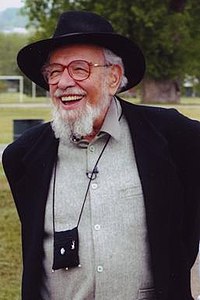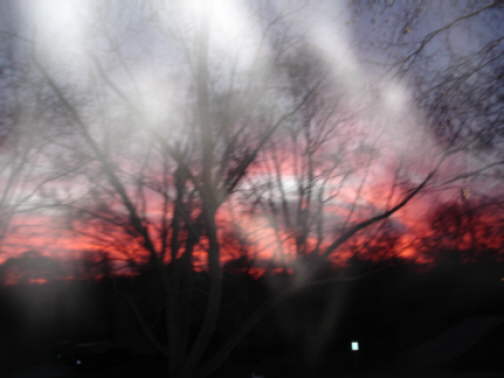This past week, a newspaper featured a picture of a Lubavitcher rabbi putting tefillon on Santa Claus. It reminded me of a story from Eli Plaut’s book, Kosher Christmas. Once mentions how an old Ukrainian Jewish immigrant dressed up as Santa Claus and spoke Yiddish. When speaking to Alan King, he quipped, “Men Mahk a leben,” which means, “A man has to make a living!” (p. 135).
Chabad and Christmas seem like an odd combination. Yet, Jewish history is full of unusual anecdotes and customs. Pious Jews have their own way of distinguishing Christmas from other days of the year, but not quite in the manner that you might think.
“December 25th is universally celebrated by non-Jews, as the birthday of that person upon whom a dominant non-Jewish religion was founded and who had the Halachic status as a Jew who lures other Jews to idol-worship. A spirit of impurity, therefore, prevails on that day. (Additionally, there was a period when members of that religion used to celebrate this eve by attacking Jews, which led to an enactment against keeping the Yeshivas open during the eve of Dec 25th).”
Note that Chabad never refers to Jesus by his proper name. Simply put, Chabad considers Jesus to be a non-person.
The Previous Lubavitcher Rebbe Rabbi Yosef Yitzchak Schneersohn (1880-1950) explains concerning this Hassidic tradition of Christmas Eve, “It is our custom to refrain from studying Torah on Nittel Nacht until midnight. The reason, as the Previous Rebbe heard from his father, the Rebbe RaShaB (Rabbi Shalom Dov Baer Schneersohn, a.k.a., the 5th Lubavitcher Rebbe), is so that one will not add spiritual vitality to that person [Jesus], and those who presently follow his views [i.e., Christians everywhere]. The Previous Lubavitcher Rebbe (quotes his father in the popular Hayom Yom (Teves 17), ‘I am not fond of those students who begrudge these eight hours and cannot tear themselves away from Torah study!’” [1]
Incidentally, most ultra-Orthodox Jews, like the Lithuanian and Sephardic communities, disregard this custom; for them—the study of Torah is of primary importance. They continue their studies on Christmas Eve as well.
HOW ARE WE TO UNDERSTAND THE ORIGIN OF THIS CUSTOM?
To understand a Jewish custom, sometimes it pays to have the curiosity and determination of a Sherlock Holmes. Most of you reading this Hassidic instruction might be wondering: “What in the world are they talking about? Why should we finish Torah study before Christmas Eve?”
The answer is more complex than most of us realize.
The origin of Nittel Nacht in modern rabbinic literature is one of the more fascinating chapters of Jewish history and folklore. “Nittel ” actually comes from the Latin, “Natalis,” or, “Nativity Night.” It is truly ironic that 99% of all the Hassidic Jews who follow this observance, haven’t the foggiest idea that Nittel Nacht means, “Nativity Night.” It is also possible that Nittel Nacht may be a corruption of the Latin dies natalis, “birthday,” i.e., the “birthday” of Jesus.[2]
While Christmas is a joyful holiday for billions of people, historically, during the medieval era and the centuries that followed, Jews were forbidden to appear on streets and public places on the high Christian holidays under penalty of severe punishment; hence the schools and synagogues were closed on those days. [3] Young and old, who were compelled to remain at home, enjoyed themselves with a variety of games; consequently, the meaning of the word Nittel received the folk etymological explanation as being an abbreviation for “Nit Iden-Tore-Lernen” (“Jews must not study Torah”).
Of course, the time of Nittel Nacht will vary depending on whether one is a Greek Orthodox Christian or not, for they celebrate the holiday on January 6th. Some Hassidic Jews, Ilan mentions, will not study Torah on New Year’s Eve either for the same reason.
In the final analysis, is there a place for Nittel Nacht today? Emphatically, “NO!!!” Not unless you purposely set out to insult our Christian neighbors. While there are a number of customs that originated during the most depraved times of medieval history, when our people suffered from Christian persecution, it behooves us to let go of our medieval attitudes.
We need to change our attitude about our Christian neighbors.
As modern Jews, it behooves us to cultivate a relationship with our Christian neighbors and friends based on the principle of mutual respect. Jewish leaders often insist that Christianity purge itself of its anti-Semitic attitudes and this is indeed necessary. In some ways, we need to start a process promoting reconciliation by doing the same. After all, we are no longer living in the 19th century.
Reason dictates that the custom of not studying Torah on Christmas Eve ought to be discontinued by any person in promoting a healthier Jewish and Christian relationship. But this cannot be done so long as we hold on to the old ideas that should have been discarded long ago in the dustbin of history. Simply put, we need to stop clinging on to the ghosts of Christmas past.
Today, even Orthodox Jews across the world and especially in the Land of Israel are beginning to explore interfaith dialogue for the first time in recent memory. We are no longer living in an age of religious polemics and religious intolerance. American society, for the most part, is definitely far more tolerant than the world our ancestors left long ago.
No religion is immune to the dangers of promoting religious prejudice; or as they say, “A pig with lipstick is still a pig.” Prejudice and intolerance should not be quietly accepted as if it is normal–because it is not! Unfortunately, the ghetto is more than just a historical space–-it is an unhealthy state of mind that we must leave behind.
When I think about this subject, the thought occurs to me that as rabbis, we need to preserve the embers of our ancestral faith—and not its ashes. Life is a series of rebirths. What you were yesterday is different from who you will be today or tomorrow. Abrahamic religions who identify with the patriarch Abraham need to find a better path that will promote peaceful relations. The only way to cure the problems we see today is for all of us to let go of the symbols and metaphors of religious hatred and intolerance that still unconsciously clings to members of our own faith communities.
I want to wish all of my Christian brothers and sisters a very Merry Christmas to you all!
=====
Notes:
[1] Anonymous, HaMaaseh Hu HaIkar (Brooklyn, NY: 2006), 10-11. I would also add that the Rabbis of Lubavitch have never referred to Jesus by name, but always through the pejorative designation of, “that man.” In biblical and rabbinic literature, to be without a name is to be condemned to virtual non-existence.
[2] Curiously, but erroneously, Rabbi M. M. Schneerson attempts to provide a Hebraic basis for the word’s etymology, “The word nittel implies ‘lack,’ or possibly ‘suspended.’ In Latin, natal means “born,” i.e., ‘the time of birth’” (Letter dated 9th Kislev 5735, printed in Likutei Sichos Vol.15, 554)
[3] The earliest Halachic reference of this custom dates back to R. Yair Chaim Bachrach (1638-1702) in his Mekor Chaim of the Chavat Yair OH:155










